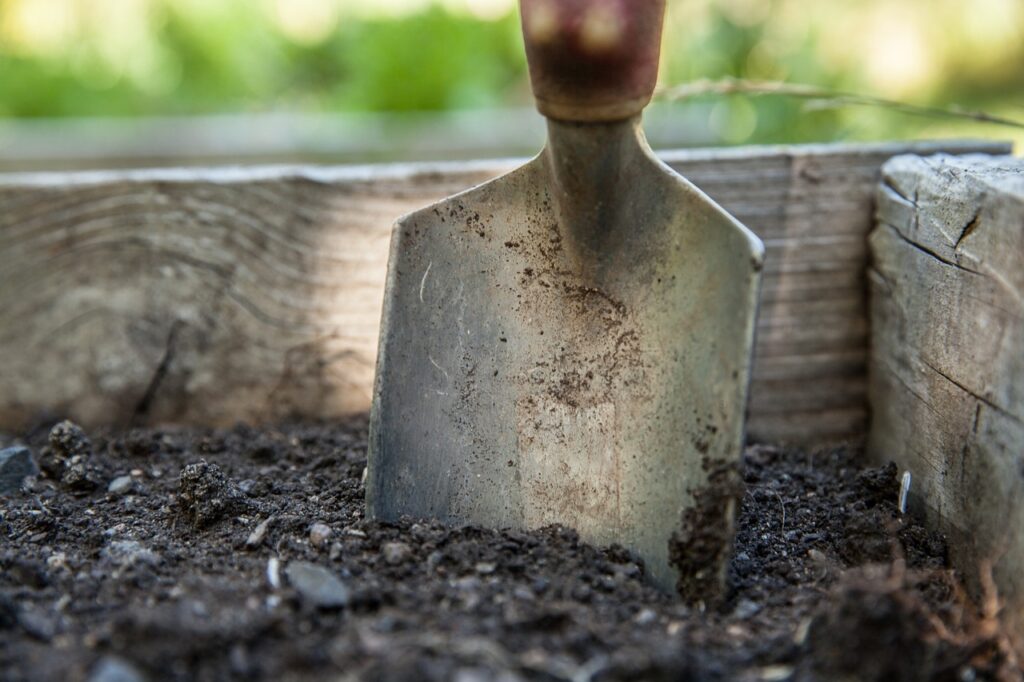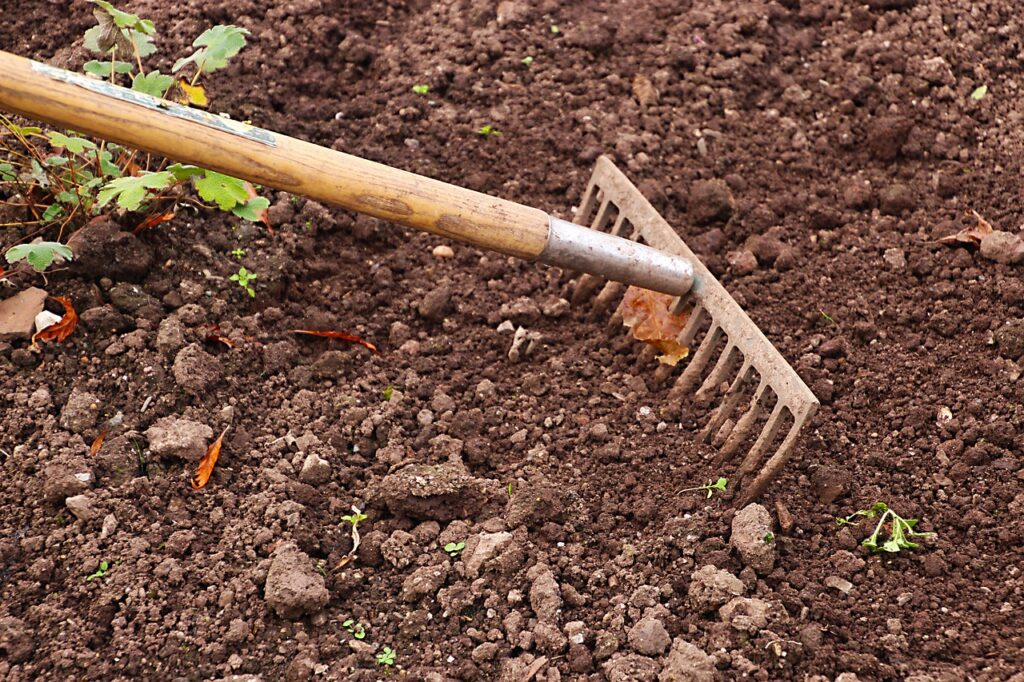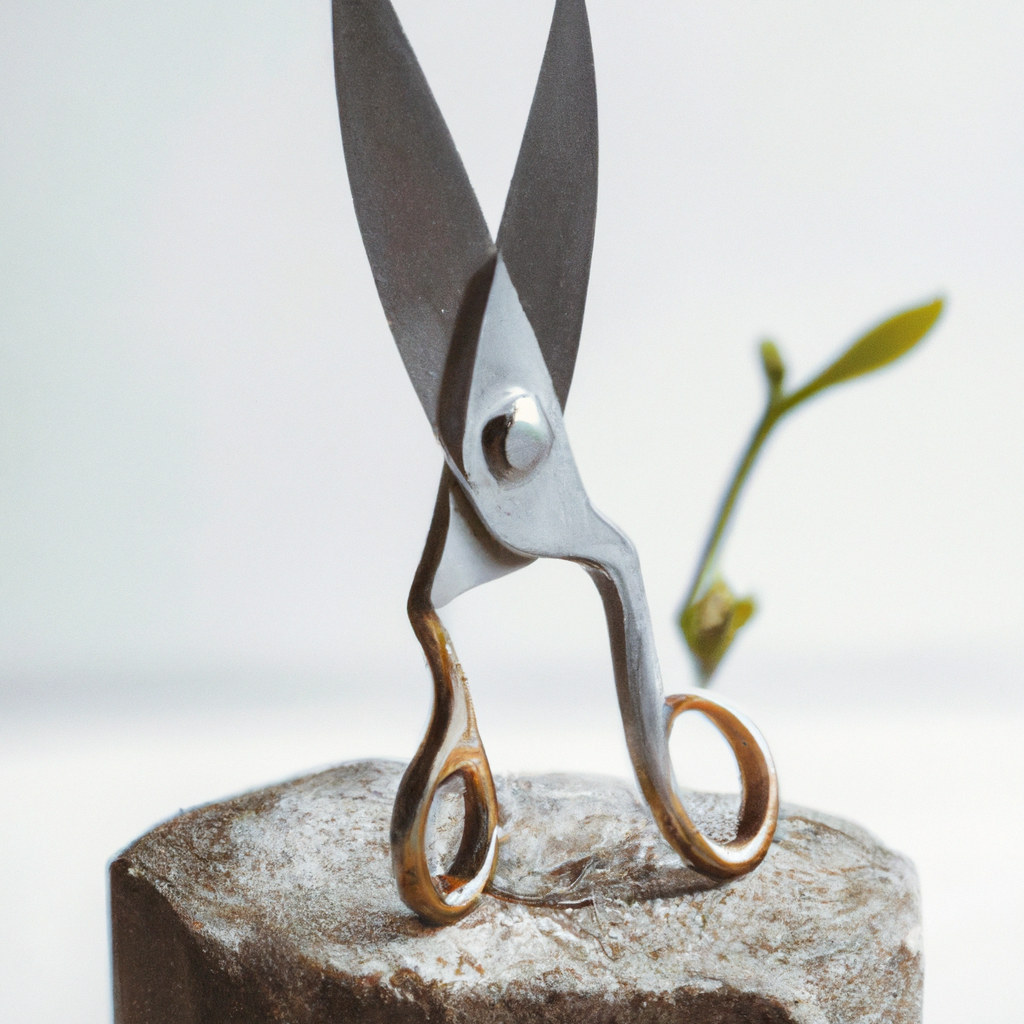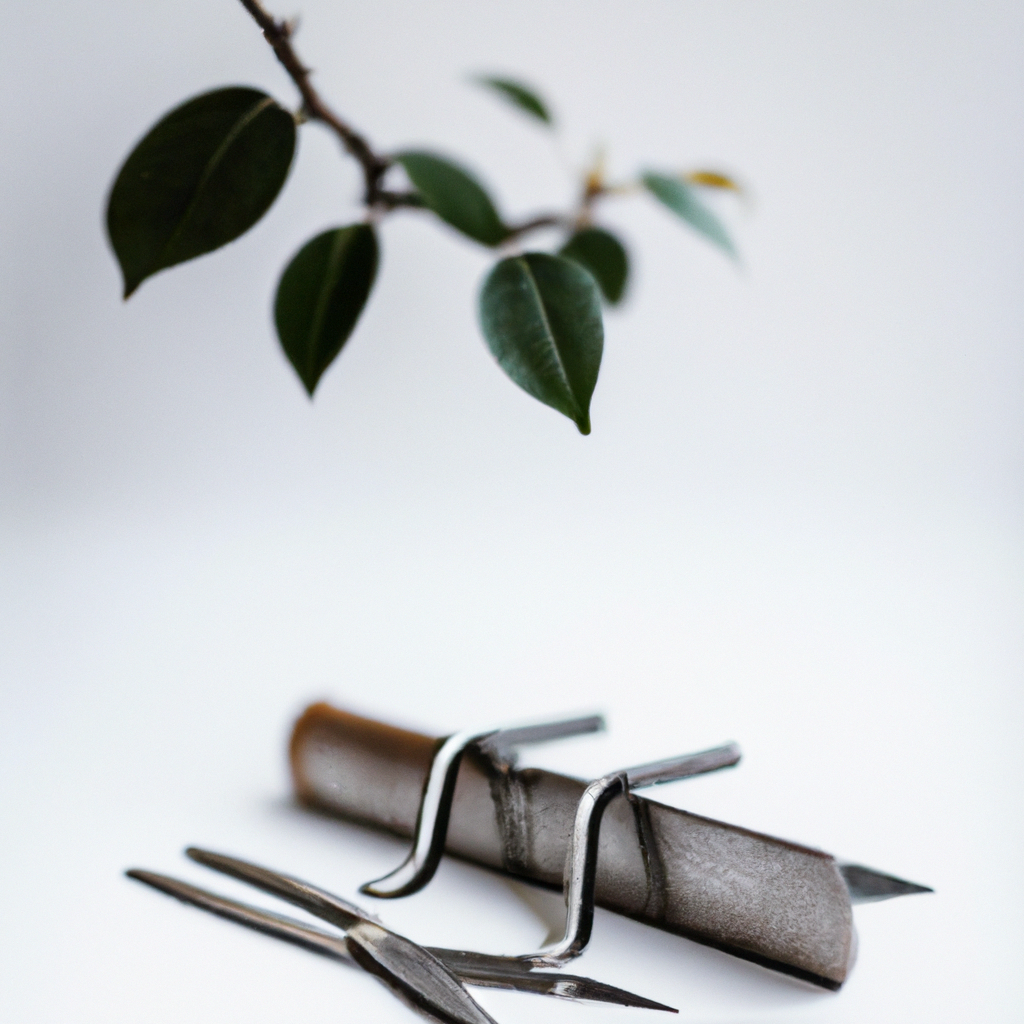Imagine stepping into a serene oasis, surrounded by beautiful landscapes meticulously crafted with traditional Japanese gardening tools. In this guide, you will be introduced to the world of traditional Japanese gardening and the essential tools that bring these stunning gardens to life. From the elegant pruning shears to the versatile bamboo rake, each tool is designed with precision and care to maintain the delicate balance between nature and art. Whether you are an avid gardener or simply intrigued by the rich cultural heritage of Japan, join us as we explore the beauty and functionality of these time-honored tools and their fascinating uses.
Background
Japanese gardening has a rich history that stretches back centuries. It is a unique blend of art, nature, and spirituality, and requires specialized tools to create and maintain these intricate landscapes. Traditional Japanese gardening tools are not only practical but also deeply rooted in cultural and aesthetic traditions. Understanding the history and importance of these tools can enhance your appreciation for Japanese gardening and help you develop a stronger connection to the natural world.
History of Japanese gardening tools
The history of Japanese gardening tools can be traced back to the ancient Heian period (794-1185). During this time, gardens were designed as sacred spaces, influenced by Buddhist and Shinto beliefs. The tools used in these early gardens were simple and primarily made of wood and bamboo.
Over time, as gardens became more elaborate and sophisticated, the tools evolved as well. The introduction of metalworking techniques during the Kamakura period (1185-1333) allowed for the production of stronger and more durable tools. Metal blades replaced wooden ones, and innovations like the hachiwari (a portable pickaxe) and hori-hori (a multipurpose knife) emerged.
During the Edo period (1603-1868), Japanese gardening tools reached their peak in terms of craftsmanship and specialization. Tools were meticulously crafted by skilled artisans, emphasizing both functionality and aesthetic appeal. The tools produced during this time are still revered today for their precision and beauty.
Importance of traditional tools in Japanese gardening
Traditional Japanese gardening tools are not simply functional instruments, but rather extensions of the gardener’s hands and mind. They embody the principles of balance, harmony, and mindfulness that are at the heart of Japanese gardening.
Using traditional tools connects the gardener to the historical and cultural heritage of Japanese gardening. It fosters a sense of respect for the craft and the generations of gardeners who came before. The tools themselves often carry a sense of tradition and history, making their use a sacred and meaningful act.
Furthermore, traditional tools are designed to work in harmony with nature. Their ergonomic shapes and sizes allow for efficient and precise movements, minimizing strain and maximizing control. They are carefully constructed to protect the plants and preserve the integrity of the garden.
By using traditional Japanese gardening tools, you are not only caring for your garden but also engaging in a deeply spiritual and meditative practice. The act of tending to the earth becomes a form of self-reflection and a way to connect with the natural world around you.
Pruning Tools
Pruning is an essential task in Japanese gardening, allowing for the shaping and maintenance of plants and trees. Traditional Japanese pruning tools are designed to create clean and precise cuts, ensuring the health and beauty of the garden.
Secateurs
Secateurs, also known as pruning scissors or hand pruners, are small shears designed to cut through small branches and stems. They feature a spring-loaded mechanism that allows for easy cutting with minimal effort.
The blades of secateurs are typically made of steel and are curved, ensuring a more precise and clean cut. Some secateurs also have replaceable blades, making maintenance and blade sharpening easier.
Pruning shears
Pruning shears, also known as loppers or long-handled shears, are designed to cut through larger branches and stems. They have long handles that provide leverage and allow for reaching higher branches.
The blades of pruning shears are larger and stronger than those of secateurs, enabling them to cut through thicker branches. They often feature a ratcheting mechanism that provides additional cutting power and reduces strain on the user.
Bonsai shears
Bonsai shears are specialized pruning shears designed for the delicate and precise pruning of bonsai trees. They have shorter blades and a smaller overall size, allowing for more intricate cuts.
Bonsai shears are often made of high-quality steel and are incredibly sharp. They are an essential tool for maintaining the shape and health of bonsai trees, which are a vital part of Japanese gardening.
Hori-Hori
Hori-Hori is a multipurpose gardening knife that originated in Japan. It has a serrated edge on one side and a sharp straight edge on the other, making it suitable for a wide range of tasks.
Hori-Hori can be used for digging, cutting, weeding, and even as a measuring tool. Its sturdy construction and sharp blade make it a versatile and reliable tool for any gardener.
Hand saw
A hand saw is an essential pruning tool for cutting through thicker branches and limbs. Traditional Japanese hand saws have fine teeth and are designed to cut on the pull stroke, providing more control and efficiency.
Hand saws come in different sizes and tooth configurations, allowing for various cutting applications. They are perfect for pruning trees and shrubs and are widely used in Japanese gardening.

Weeding Tools
Weeding is a crucial aspect of Japanese gardening, as it ensures the health and beauty of the garden by removing unwanted plants and preventing the spread of weeds. Traditional Japanese weeding tools are designed to tackle this task efficiently and with care.
Kama
Kama is a traditional Japanese sickle used for cutting grass, weeds, and other unwanted plants. It consists of a curved blade attached to a long handle, allowing for easy swinging motions.
The curved shape of the blade ensures precise cutting, while the long handle provides leverage and control. Kama is a versatile tool and is widely used in Japanese gardening for weeding and grass cutting.
Hiragama
Hiragama is a specialized weeding tool used for removing weeds from the joints and crevices of stone paving and walls. It has a narrow, pointed blade that can reach tight spaces and extract weeds without damaging the surrounding structures.
Hiragama is designed to be ergonomic and easy to handle, enabling precise and delicate weeding. It is an essential tool for maintaining the cleanliness and integrity of Japanese rock gardens.
Kusakaji
Kusakaji, also known as a grass sickle, is a broad, slightly curved sickle designed for cutting grass and thick vegetation. It is particularly useful for clearing overgrown areas and trimming the edges of pathways.
Kusakaji has a sharp blade that can make quick work of heavy grass and greenery. It is a sturdy and reliable tool that is commonly used in Japanese gardening to maintain the neatness and cleanliness of the garden.
Nejiri Gama
Nejiri Gama is a handheld weeding tool with a narrow, V-shaped blade. It is perfect for precision weeding around delicate plants and in tight spaces.
The sharp point and slim design of Nejiri Gama allow for accurate and gentle removal of weeds. Its ergonomic handle provides comfort and control, making it a popular choice among Japanese gardeners.
Hoe
A hoe is a versatile tool used in various gardening tasks, including weeding, cultivating, and soil preparation. Traditional Japanese hoes have a unique shape, with a slightly curved blade and a long handle.
The design of the hoe allows for efficient and swift cutting and chopping motions. It is an indispensable tool for maintaining the cleanliness and health of the garden by keeping unwanted plants at bay.
Digging Tools
Digging is a fundamental aspect of Japanese gardening, whether it’s creating planting holes or shaping the terrain. Traditional Japanese digging tools are designed to be efficient, durable, and easy to use.
Tsuchi kiri
Tsuchi kiri, also known as a soil-knife or soil-slicer, is a specialized digging tool used for precise cutting and shaping of the soil. It has a sharp, curved blade that can effortlessly cut through compacted soil, roots, and grass.
Tsuchi kiri is designed to be ergonomic, with a comfortable handle and a well-balanced weight distribution. It is an essential tool for Japanese gardeners, allowing them to create clean and precise edges and contours.
Hachiwari
Hachiwari is a portable pickaxe used for digging and breaking up hard and rocky soil. It has a sturdy, wedge-shaped blade attached to a long handle, providing leverage and power.
Hachiwari is commonly used in Japanese rock gardens to shape the terrain and create dramatic slopes and contours. Its robust construction and sharp blade make it an indispensable tool for any serious gardener.
Sudare
Sudare is a traditional Japanese rake with bamboo tines. It is primarily used for leveling and smoothing the soil surface and removing debris like fallen leaves and small rocks.
Sudare’s bamboo tines are gentle on plant roots and can effectively remove unwanted material without disturbing the surrounding soil. Its flexible nature allows for precise and delicate movements, making it an ideal tool for Japanese gardening.
Rake
A rake is one of the most basic and versatile digging tools used in gardening. Traditional Japanese rakes have wide, wooden or bamboo teeth that can be easily adjusted or replaced.
Rakes are used for various tasks, including leveling soil, spreading gravel, and removing debris. They are invaluable tools in Japanese gardening, allowing for efficient and thorough soil preparation and maintenance.
Pitchfork
A pitchfork is a tool with long, slender tines used for loosening and turning over soil. Traditional Japanese pitchforks have shorter and thicker tines compared to their Western counterparts.
Pitchforks are perfect for aerating the soil and incorporating organic matter like compost and mulch. They are essential tools for Japanese gardeners, ensuring the health and fertility of the garden.

Watering Tools
Watering is a crucial aspect of Japanese gardening, as it provides the necessary hydration for plants and helps create a serene and tranquil environment. Traditional Japanese watering tools are designed to distribute water evenly and gently, minimizing damage to delicate plants.
Kanna
Kanna, also known as a water spout or watering wand, is a long and slender tool used for precise watering of plants. It has a curved spout at one end and a bamboo handle at the other.
Kanna is designed to provide a gentle and controlled stream of water, minimizing soil erosion and preventing damage to foliage. It is an essential tool for Japanese gardening, allowing for precise and nurturing watering.
Mizubachi
Mizubachi is a traditional Japanese water basin used for collecting and distributing water in the garden. It is usually made of stone or ceramic and features a shallow and wide design.
Mizubachi is not only functional but also serves as a decorative element in Japanese gardens, adding to the overall aesthetic. It is a symbol of tranquility and serenity and is widely used in tea gardens and water features.
Suiban
Suiban is a shallow, rectangular container used for displaying flowers and other natural elements in Japanese flower arrangements. It is often filled with water to create a serene and reflective surface for the arrangements.
Suiban is made of various materials, including ceramic, metal, and stone. Its versatile design and simplicity make it a favorite tool among Japanese flower arrangement enthusiasts and gardeners alike.
Bamboo water ladle
A bamboo water ladle, also known as a hishaku, is a traditional Japanese tool used for scooping water and pouring it onto plants. It has a long bamboo handle and a wide, shallow scoop.
Bamboo water ladles are designed to provide a gentle and even stream of water, allowing for precise watering without causing any damage. They are widely used in Japanese tea gardens and traditional water features.
Watering can
A watering can is a traditional gardening tool used for the distribution of water. Traditional Japanese watering cans often have a simple and minimalist design, emphasizing functionality and ease of use.
Watering cans come in various sizes and capacities, allowing for flexibility and customization. They are essential tools in Japanese gardening, ensuring the proper hydration of plants and maintaining the beauty of the garden.
Planting Tools
Planting is a fundamental task in Japanese gardening, allowing for the introduction of new plants and the creation of vibrant landscapes. Traditional Japanese planting tools are designed to handle various planting tasks with precision and care.
Seki Masanori
Seki Masanori is a specialized planting tool used for creating planting holes and transplanting seedlings. It has a sharp, crescent-shaped blade attached to a long handle, allowing for precise cutting and digging.
Seki Masanori is designed to be ergonomic, with a comfortable grip that minimizes strain and fatigue. It is widely used in Japanese gardening for the efficient and accurate planting of a variety of plants.
Niwaki
Niwaki, also known as cloud pruning shears, are specialized pruning shears used for shaping and maintaining trees and shrubs. They have a unique, curved blade that creates intricate and artistic cuts.
Niwaki is designed to be lightweight and maneuverable, allowing for precise pruning and shaping. It is an essential tool for creating the iconic cloud-like shapes often seen in Japanese gardens.
Sodegaki
Sodegaki is a traditional Japanese hand hoe used for planting and maintaining small plants. It has a narrow, curved blade that allows for precision cutting and digging.
Sodegaki is particularly useful for creating furrows and small planting holes in tight spaces. Its small size and ergonomic design make it a popular choice for Japanese gardeners.
Tsubo-niwa set
Tsubo-niwa set is a collection of planting tools specifically designed for small gardens and plant containers. It typically includes a mini trowel, a mini rake, and a pair of mini pruning shears.
The tsubo-niwa set is perfect for tending to bonsai trees, moss gardens, and other miniature landscapes. Its compact size and specialized tools allow for precise and delicate gardening.
Hori hori dibber
Hori hori dibber is a versatile planting tool that combines the functions of a knife, a trowel, and a measuring tool. It has a long, serrated blade with depth markings and a comfortable handle.
Hori hori dibber is ideal for digging, cutting, and measuring, making it a versatile tool for a range of planting tasks. Its durable construction and ergonomic design make it a popular choice among Japanese gardeners.

Rock Gardening Tools
Rock gardening, also known as karesansui or dry landscape gardening, is a prominent feature of Japanese gardens. Traditional Japanese rock gardening tools are designed to create and maintain these beautifully crafted landscapes.
Chokkan tsubo
Chokkan tsubo is a specialized rock gardening tool used for arranging rocks and creating picturesque compositions. It has a slender, pointed blade that allows for precise placement and alignment of rocks.
Chokkan tsubo is designed to be ergonomic and easy to handle, enabling the creation of intricate rock arrangements. It is an essential tool for Japanese rock garden enthusiasts and professionals.
Yarihari
Yarihari is a traditional Japanese tool used for separating and lifting heavy rocks in rock gardens. It has a long, sturdy handle and a sharp, curved blade.
Yarihari is designed to provide leverage and power, allowing for efficient rock manipulation. It is an indispensable tool for Japanese rock gardeners, enabling them to create striking and dynamic landscapes.
Tsukubai
Tsukubai is a traditional Japanese stone basin often found in tea gardens and entranceways. It is used for ritual cleansing before tea ceremonies and as a source of water for washing hands.
Tsukubai is meticulously crafted to create a serene and meditative environment. Its design and placement are critical in Japanese gardens, enhancing the overall aesthetic and spiritual experience.
Chisels
Chisels are essential tools in Japanese rock gardening, allowing for precise carving and shaping of stones. They come in various sizes and shapes to accommodate different carving techniques.
Chisels are designed to be durable and sharp, providing the necessary tools for sculpting rocks and creating intricate details. They are meticulously crafted by skilled artisans and are highly valued in Japanese rock gardening.
Hammer
A hammer is a basic tool used in various gardening tasks, including rock splitting and shaping. Traditional Japanese hammers have a long, wooden handle and a metal head.
Hammers are used in conjunction with other tools like chisels and yarihari to sculpt rocks and create unique features in rock gardens. They are invaluable tools for Japanese rock gardening, allowing for both precision and strength.
Bamboo Work Tools
Bamboo is a versatile and sustainable material widely used in traditional Japanese gardening. It can be found in a range of tools specifically designed for working with bamboo and maintaining its integrity.
Koshiwari
Koshiwari is a specialized bamboo knife used for splitting and separating bamboo into thin strips. It has a thin, curved blade that allows for precise cutting and shaping.
Koshiwari is designed to be ergonomic and comfortable to handle, ensuring efficiency and ease of use. It is an indispensable tool for Japanese gardeners and craftsmen working with bamboo.
Bagiri
Bagiri is a traditional Japanese bamboo saw used for cutting thick bamboo culms into desired lengths. It has a long, serrated blade that provides precise and clean cuts.
Bagiri is designed to have a flexible blade, allowing for smooth cutting motion and reducing the risk of bamboo splintering. It is an essential tool for bamboo artisans and Japanese gardeners working with bamboo.
Horigawa
Horigawa, also known as a bamboo splitter, is a specialized tool used for splitting bamboo into smaller sections. It consists of a sharp blade with a handle on one end.
Horigawa is designed to be sturdy and durable, allowing for effective splitting of bamboo with minimal effort. It is widely used in traditional Japanese gardening for creating various bamboo structures and features.
Bamboo spade
A bamboo spade is a unique tool made entirely from bamboo, including the handle and the blade. It is primarily used for digging and transplanting small plants and seedlings.
Bamboo spades are lightweight yet sturdy, allowing for efficient digging without causing excessive damage to the roots. They are a testament to the versatility and sustainability of bamboo as a material in Japanese gardening.
Saw
A saw is a versatile tool used for cutting and shaping bamboo into various sizes and forms. Traditional Japanese bamboo saws have fine teeth and are designed to cut on the pull stroke.
Saws are indispensable tools for bamboo craftsmen and Japanese gardeners working with bamboo. They provide clean and efficient cuts, allowing for precise and accurate bamboo work.

Maintenance Tools
Proper maintenance of gardening tools is essential for their longevity and optimal performance. Traditional Japanese gardening tools require regular care and attention to ensure their functionality and preserve their historical significance.
Oil stone
An oil stone is a sharpening tool used for maintaining the edges of blades on various gardening tools. It consists of a flat stone surface that is lubricated with oil to prevent overheating and promote smooth sharpening.
Oil stones come in different grades and grit sizes, allowing for versatile sharpening options. They are essential tools for Japanese gardeners, promoting tool efficiency and longevity.
Sharpening guide
A sharpening guide is a tool used in conjunction with an oil stone to ensure consistent and accurate sharpening of blades. It holds the blade at a precise angle, allowing for controlled and even sharpening.
Sharpening guides are particularly useful for novice gardeners or those who prefer a simple and foolproof sharpening method. They provide stability and guidance, helping to maintain the sharpness of traditional Japanese gardening tools.
Whetstone
A whetstone, also known as a water stone, is a sharpening tool commonly used in Japanese gardening. It is made of natural or synthetic abrasive material and is used with water for lubrication.
Whetstones come in different grit sizes, allowing for various sharpening applications. They are reliable and efficient tools for maintaining the sharpness and performance of traditional Japanese gardening tools.
Gardening gloves
Gardening gloves are essential for protecting your hands from thorns, sharp edges, and chemical exposure during gardening tasks. Traditional Japanese gardening gloves are designed to be durable, comfortable, and flexible.
Gardening gloves come in various materials, including leather, cotton, and synthetic fibers. They provide the necessary protection while allowing for dexterity and tactile sensitivity, ensuring safe and enjoyable gardening experiences.
Cleaning brushes
Cleaning brushes are essential tools for maintaining the cleanliness and functionality of gardening tools. They are used to remove dirt, debris, and rust from blades and other surfaces.
Cleaning brushes come in various shapes and sizes, allowing for thorough cleaning in different areas and crevices. They are indispensable tools for Japanese gardeners, promoting proper tool hygiene and preventing the spread of diseases.
Tips for Using Traditional Japanese Gardening Tools
Using traditional Japanese gardening tools requires a combination of skill, knowledge, and respect for their history and significance. Here are some tips to help you make the most of these unique tools:
Choose the right tool for the task
Each traditional Japanese gardening tool has its specific purpose and function. Take the time to familiarize yourself with the different types of tools and their uses. Select the tool that is best suited for the task at hand, ensuring efficient and effective gardening.
Learn proper tool maintenance
Proper maintenance of traditional Japanese gardening tools is essential for their longevity and performance. Learn how to clean, sharpen, and store your tools correctly. Regularly inspect your tools for any signs of wear or damage, and address them promptly to ensure their continued reliability.
Pay attention to ergonomics
Traditional Japanese gardening tools are designed to be ergonomic, minimizing strain and promoting efficient movements. Pay attention to your posture and technique when using these tools. Take breaks when needed and listen to your body to prevent injury.
Respect the tools and their history
Traditional Japanese gardening tools are not mere objects but carry a rich history and cultural significance. Treat them with respect and care, as they are extensions of the gardener’s hands and mind. Appreciate their craftsmanship and the generations of gardeners who came before you.
Practice using the tools
Using traditional Japanese gardening tools requires practice and patience. Take the time to familiarize yourself with each tool’s unique features and methods of use. Through practice, you will develop a deeper understanding of the tools’ capabilities and refine your technique.
By understanding the background and significance of traditional Japanese gardening tools and their specific uses, you can enhance your gardening experience and cultivate a deeper connection with the natural world around you. Embrace the artistry and mindfulness embedded in these tools, and let them guide you in creating and maintaining your own beautiful Japanese garden.

